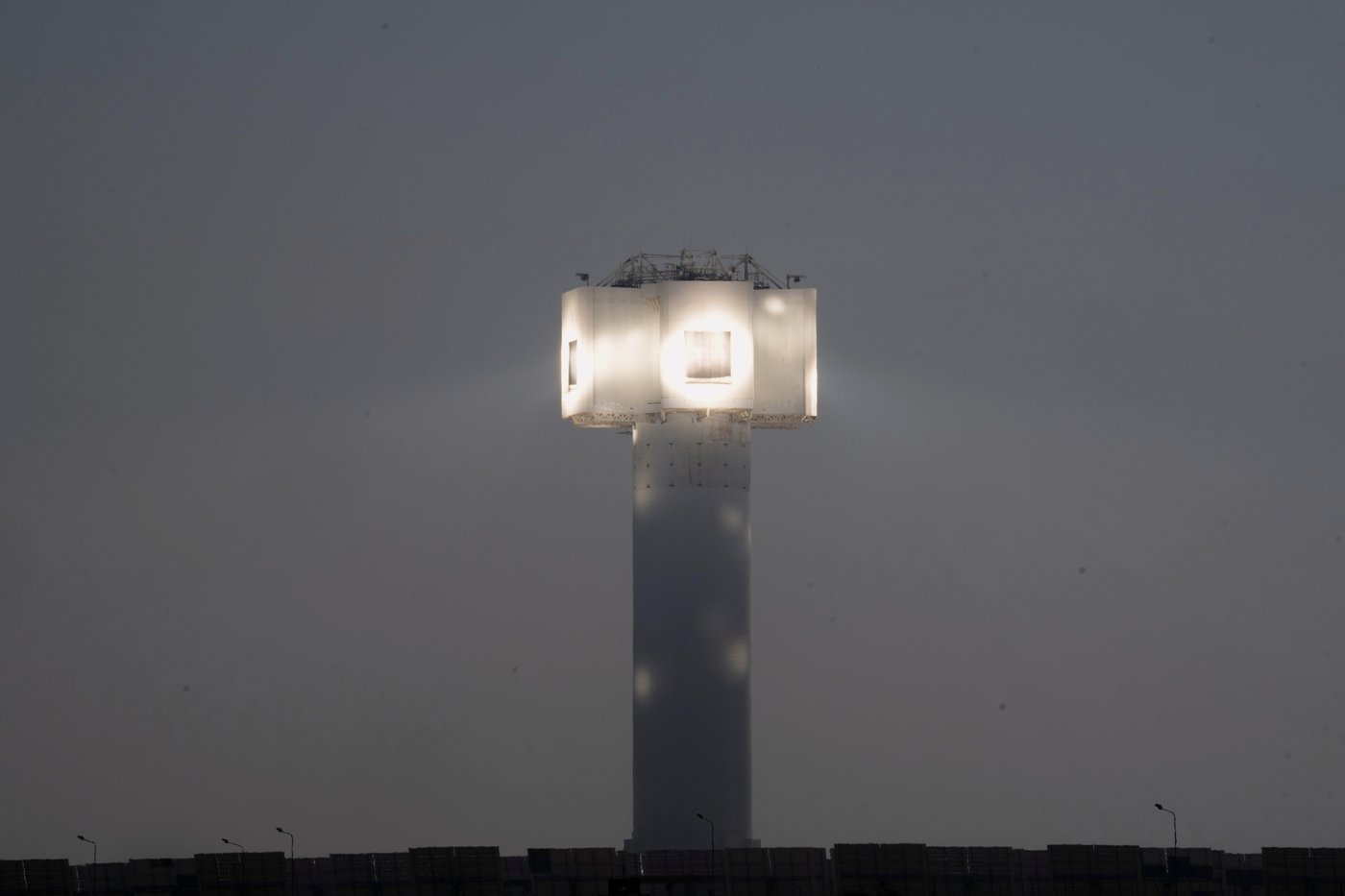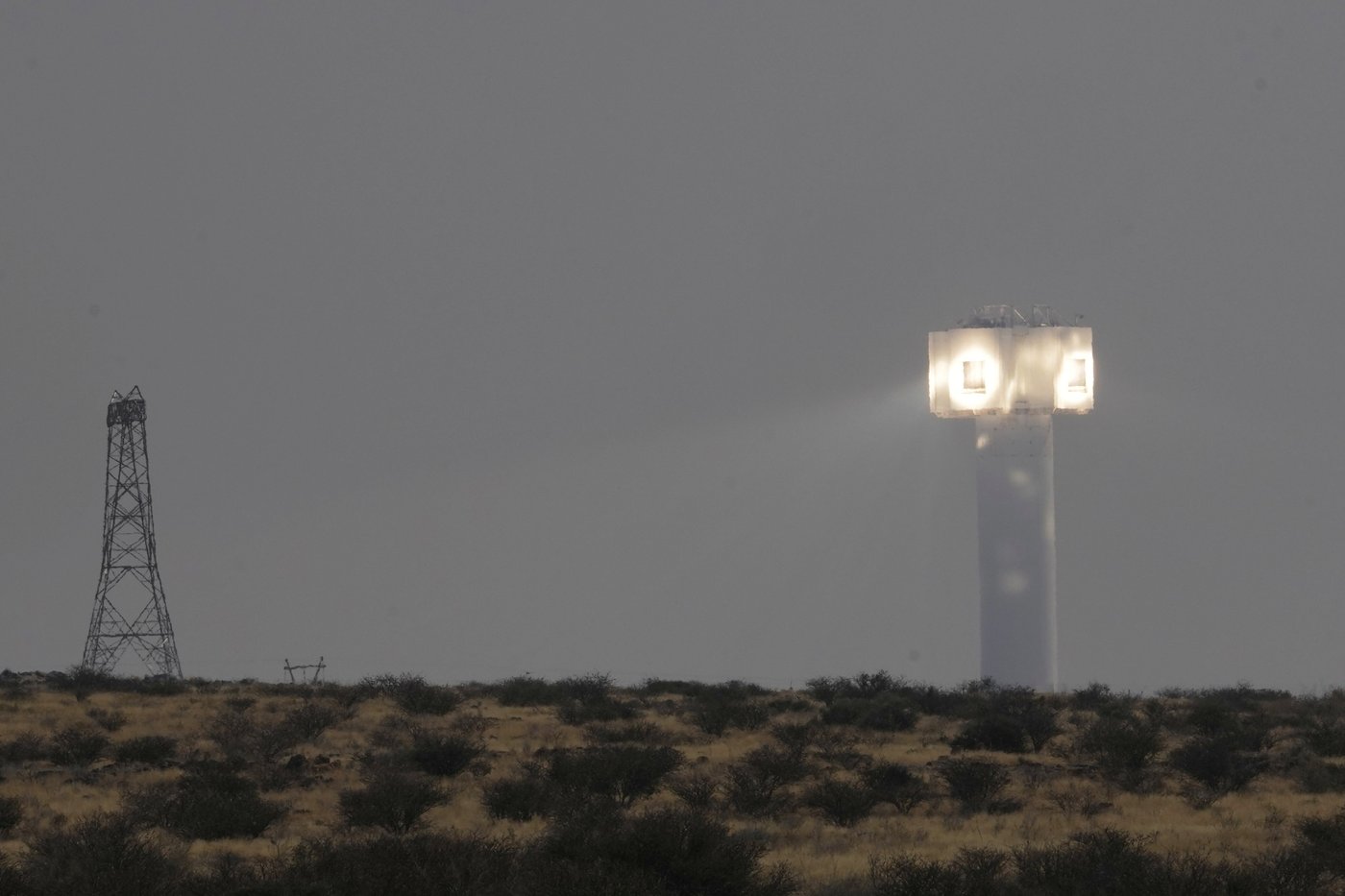
Africa’s solar energy potential makes for a bright future for renewable power
UPINGTON, South Africa (AP) — Deep in South Africa’s Northern Cape province, south of the Kalahari Desert, a beaming light towers above dozens of solar mirror panels.
The mirrors tilt to varying degrees throughout the day, tracking the sunrays and projecting them onto a tower. The tower houses a receiver that absorbs intense heat, boils water and produces high-pressure steam. This is then converted into 50 megawatts of electricity — enough to power over 40,000 households for 24 hours.
The KHI Solar One project is one of many looking to add renewable energy to South Africa’s power grid, which is heavily reliant on coal-fired power stations.
However, as hundreds of delegates prepare to gather in the Ethiopian capital of Addis Ababa for the Africa Climate Summit this week, it’s clear that many more such projects are needed to bring electricity to millions of people on the continent who need it and to fight the impacts of climate change.
Africa’s energy needs
According to the International Energy Agency, about 600 million people on a continent of some 1.5 billion live without electricity, leaving children without lights to study at night and homes without power for appliances.
The World Bank estimates that Central and West Africa have some of the world’s lowest electrification rates. In West Africa, where 220 million people have no electricity, the electrification rate is as low as 8%.
The lack of electricity also limits the continent’s access to quality health care, education and economic growth brought about by a sufficient and uninterrupted power supply.
The continent’s embracing of renewable energy has been slow when compared to more developed economies like China, European countries and the U.S., which account for 80% of renewable power capacity installed worldwide.
Only 1.5% of installed renewable power capacity is in Africa.
Renewable energy potential in Africa
According to a report by the United Nations released in July, Africa has 60% of the world’s best solar resources with the continent’s deserts and warm climate creating massive potential for solar projects.
Despite this, Africa received just 2% of global clean energy investments in 2024.
At a climate summit in January this year, African leaders committed to bringing renewable energy capacity in Africa to 300 gigawatts by 2030. That amount of power equals the output of about 114 large power stations — enough to power a large city or a small country. Meanwhile, the International Renewable Energy Agency projects that 90% of Africa’s power could be generated from renewables including solar by 2050.
This includes other renewable energy sources besides solar, with countries like South Africa opting for an energy mix that includes hydropower and wind energy.
China’s rising solar exports to Africa
Some recent analysis of Chinese export data has shown that exports of solar panels to Africa have increased significantly over the last 12 months.
A report by energy think tank Ember notes that imports from China rose 60% in the last year to 15,032 megawatts, with 20 African countries setting a record for imports of solar panels in a 12-month period.
While the surge in solar panels had previously been buoyed by imports by South Africa, which went through years of power blackouts due to a lengthy electricity crisis, imports of solar panels from outside of South Africa tripled in the last 12 months.
Increasingly, independent energy companies are seeing Africa as a market for solar products as they look to fulfill the continent’s energy needs.


Join the Conversation!
Want to share your thoughts, add context, or connect with others in your community?
You must be logged in to post a comment.


















